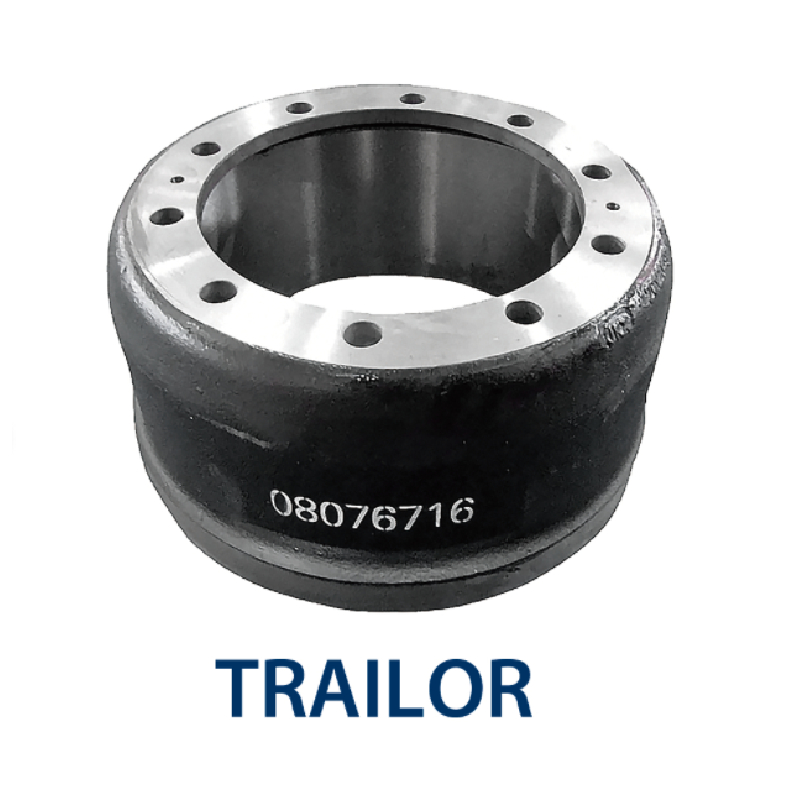Nov . 21, 2024 06:15 Back to list
signs of a warped brake drum
Signs of a Warped Brake Drum
When it comes to vehicle safety, the braking system is one of the most critical components. A well-functioning brake system ensures that you can slow down or stop your vehicle whenever necessary. An important part of this system, particularly in drum brakes, is the brake drum itself. Over time and with frequent use, brake drums can become warped, leading to various performance issues. Understanding the signs of a warped brake drum can help you identify potential problems early and maintain your vehicle's safety.
What is a Brake Drum?
A brake drum is a cylindrical component that plays a crucial role in the braking system of vehicles equipped with drum brakes. When you press the brake pedal, brake shoes are pushed against the inner surface of the drum, creating friction to slow down the rotation of the wheel. Over time, this friction can cause heat buildup, which may lead to warping of the drum.
Signs of a Warped Brake Drum
1. Vibration or Pulsation While Braking One of the most noticeable signs of a warped brake drum is a vibration or pulsation felt through the brake pedal or steering wheel when you apply the brakes. This sensation can be particularly pronounced during hard braking. If you experience this, it’s crucial to have your brake components inspected promptly.
2. Unusual Noises A warped brake drum can lead to abnormal noises when braking, such as grinding, squeaking, or thumping sounds. These noises may stem from the brake shoes making uneven contact with the drum. If you hear any unusual sounds when braking, it’s essential to address the issue before it leads to more significant problems.
signs of a warped brake drum

3. Inconsistent Braking Performance If you find that your vehicle does not stop as effectively as it once did or if the brakes feel soft or unresponsive, this could indicate a problem with the brake drum. Warping can lead to uneven braking force distribution, compromising the braking system's effectiveness and potentially increasing stopping distances.
4. Wear on Brake Shoes A warped brake drum can cause uneven wear on the brake shoes. If you notice that your brake shoes are wearing out faster than usual or are unevenly worn, it could be a sign of a warped drum. Regular inspection of your brake shoes can provide clues about the state of your brake drums.
5. Visual Inspection If you are mechanically inclined, you can perform a visual inspection of your brake drums. Look for grooves, cracks, or other irregularities on the surface of the drum. A warped brake drum may appear distorted or uneven. If you notice any of these issues, it is advisable to seek professional help.
6. Brake Drag Sometimes, a warped brake drum may cause the brake shoes to remain in contact with the drum even when not braking, leading to brake drag. This condition can cause the brakes to overheat, leading to additional damage to the braking system and reduced fuel efficiency.
Conclusion
Monitoring the performance of your vehicle's braking system is essential for both safety and reliability. Recognizing the signs of a warped brake drum can prevent further damage and ensure that your vehicle remains safe to drive. If you experience any of the symptoms mentioned above, it is essential to consult a qualified mechanic who can diagnose the issue and recommend the necessary repairs or replacements. Regular maintenance and timely interventions can help extend the life of your vehicle's braking system and keep you safe on the road.
-
Your Brake Drum Man: Quality & Performance Parts
NewsAug.21,2025
-
Explore Japan: Ultimate Travel Guide & Authentic Experiences
NewsAug.19,2025
-
Your Brake Drum Man: Premium & Reliable Brake Drums for Sale
NewsAug.18,2025
-
ROR Web Development: Build Fast, Scalable, Secure Apps
NewsAug.17,2025
-
Scania Brake Drums: OEM Quality for Optimal Safety & Durability
NewsAug.16,2025
-
R.V.I: Advanced Remote Visual Inspection for Precision
NewsAug.15,2025
